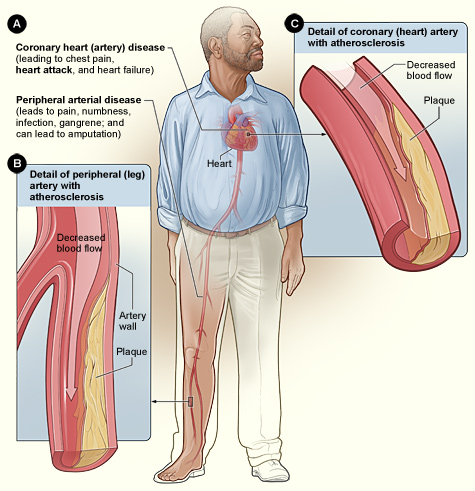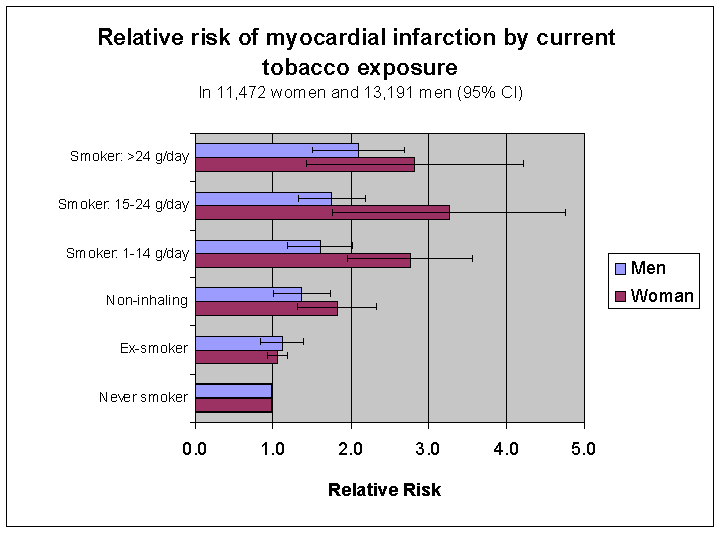Tobacco use is a major preventable cause of premature death and disease worldwide. Currently, approximately 5.4 million people die each year due to tobacco-related illnesses—a figure expected to increase to more than 8 million a year by 2030.Cigarette smoking causes about 1 in every 5 deaths in the United States each year. It’s the main preventable cause of death and illness in the United States.
Smoking harms nearly every organ in your body, including your heart, blood vessels, lungs, eyes, mouth, reproductive organs, bones, and digestive organs.

Smoking and Your Heart and Blood Vessels
The chemicals in tobacco smoke harm blood cells and can damage the function of the heart and the structure and function of blood vessels. This damage increases your risk of atherosclerosis.
Smoking by itself increases your risk of coronary artery disease (CAD) and the risks are different for men and women:
Your Risk for heart disease and stroke increases with the number of cigarettes smoked and has been reported to increase the incidence of MI 6-fold in women and 3-fold in men compared to nonsmokers.
Smoking decreases your tolerance for physical activity and increases the tendency for your blood to clot. It decreases your HDL (good) cholesterol. Your risk for heart disease increases greatly if you smoke and have a family history of heart disease. Smoking also creates a higher risk for peripheral artery disease including aneurysms.
Smoking is also an important risk factor for stroke. Inhaling cigarette smoke produces several effects that damage the cerebrovascular system. Women who take oral contraceptives and smoke increase their risk of coronary artery disease and stroke significantly.
Over time, CAD can lead to chest pain, heart attack, heart failure, arrhythmias, or even death.
Smoking by itself is a major risk factor for heart disease. When combined with other risk factors—such as abnormal cholesterol levels, high blood pressure, overweight or obesity and/or diabetes—smoking further raises the risk of heart disease.
Smoking also is a major risk factor for peripheral arterial disease (PAD). PAD is a condition in which plaque builds up in the arteries that carry blood to the head, organs, and limbs. People who have P.A.D. are at increased risk of heart disease, heart attack, and stroke.
It’s also important to avoid other people’s smoke. The link between secondhand smoke and heart disease is well known. Each year about 38,000 people die from heart and blood vessel disease caused by other people’s smoke. Nonsmokers who are exposed to secondhand smoke at home or at work increase their risk of developing heart disease by 25–30 percent.
What good will it do to quit smoking if you already have heart disease? Lots! Your lungs can begin to heal themselves as soon as you stop harming them with more smoke. Heart disease can be prevented and controlled, but you must follow your treatment plan — and quitting smoking is a big part.





